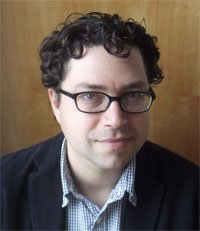by Erick Schonfeld
Big Data is a hard concept to grasp because it applies to so many things in our digital world: the exabytes of information produced every year, the digital exhaust of a billion cell phones, the GPS coordinates tracking everything from trucks and trains to the migratory patterns of ocean life, the inventory data spewed by RFID tags, the measurement of our quantified selves through apps and devices that can track every footfall. Rick Smolan, the photographer and mass media coordinator who brought us the Day in the Life books, is embarking on one of his biggest projects yet: The Human Face of Big Data.
Smolan sent a hundred photographers around the world to make sense of big data and capture the human side of the equation. The resulting stories will be presented in a large coffee-table photo book, a website, a documentary, and an iPad app. He also has smartphone apps (Android is available now, iPhone is coming this week) that he wants millions of people to download to record anonymized data such as how many times a day they use email, make calls, or are in the presence of other smartphones. The app also will collect answers to polls and match you up with your data doppelganger on the other side of the world
In the video above he explains the project and takes a stab at defining big data. He cites Yahoo CEO Marissa Mayer, who described big data as the world’s nervous system—a realtime feedback loop which didn’t exist before.
Perhaps the best explanation is the one Smolan gave to his 10-year-old son, Jesse. He told Jesse that the effect of big data is like going from seeing the world with one eye your whole life to suddenly opening up your second eye. “What you are seeing is not just more data, but a new dimension. You are able to see something you could not see with just one eye” he says. But it goes well beyond stereoscopic vision. “Would a computer let us open up a third eye and a fourth eye?” Jesse asked. “Exactly,” says Smolan. “We can take all of this data collected by all of these different devices and organizations, and we can now start seeing patterns by overlapping and extracting meaning from them.”
Putting A Human Face on Big Data
Big Data is a hard concept to grasp because it applies to so many things in our digital world: the exabytes of information produced every year, the digital exhaust of a billion cell phones, the GPS coordinates tracking everything from trucks and trains to the migratory patterns of ocean life, the inventory data spewed by RFID tags, the measurement of our quantified selves through apps and devices that can track every footfall. Rick Smolan, the photographer and mass media coordinator who brought us the Day in the Life books, is embarking on one of his biggest projects yet: The Human Face of Big Data. Smolan sent a hundred photographers around the world to make sense of big data and capture the human side of the equation. In the video above he explains the project and takes a stab at defining big data.














